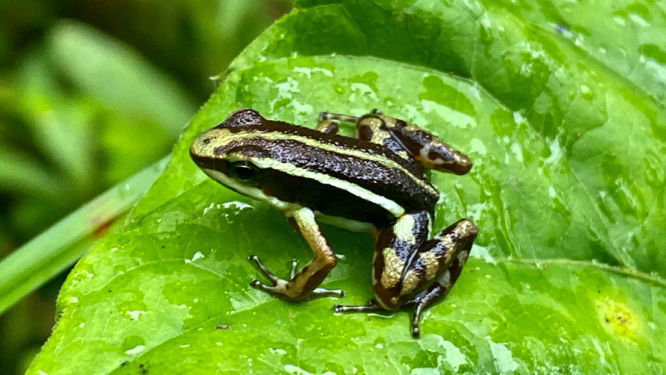Departure Date: August 17 - 28, 2025
Compiled By: Paul J. Greenfield
Trip Leaders: Paul Greenfield, Remigio Grefa
Toll Free: 800.328.8368
Phone: 512.328.5221
Southern Ecuador Hummingbird & Tanager Extravaganza 8/17/2025-8/28/2025

Ecuador holds a multiverse of climates, scenery, cultures, ecosystems, flora and fauna—and it ranks as one of the world’s top megadiverse nations; being as small as it is, that really says a lot! Our 2025 Southern Ecuador Hummingbird and Tanager Extravaganza explored just some of the key hot-spots in this fascinating country’s southern region, from temperate zone and páramo habitats in the highlands down to the Amazonian and Pacific slope foothill cloudforests and to the coastal wetlands. Each area we sampled offered new variety to our bird species "shopping cart."
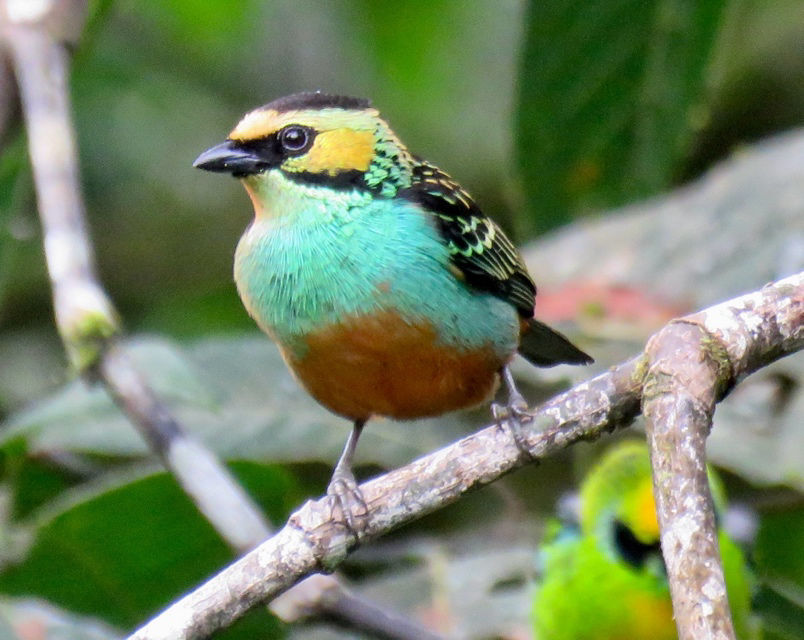
Golden-eared Tanager © Paul J. Greenfield
After a brief bit of birding (Scrub Tanager, etc.) from the parking area at Hostería San José de Puembo, we headed to the airport for our short flight to the southern city of Cuenca, where we were met by our trusty ground agent/driver and immediately drove to our first birding location. To our surprise, the entrance to Llaviucu Lake was closed to the public, but that didn’t stop us from scoring a Rainbow Starfrontlet, Turquoise Jay, and Chiguanco Thrush, among other species, before enjoying a box lunch and then departing upslope. A chance roadside stop produced a Violet-throated Metaltail (an extremely range-restricted hummingbird found only in this immediate area)!
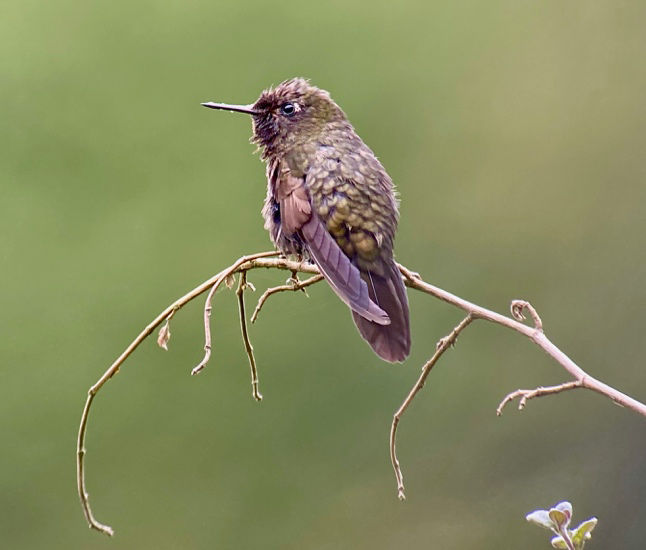
Violet-throated Metaltail © Remi Grefa
We pushed on up into the tundra-like páramo zone (it’s getting cold!) and visited another lake area, where we were greeted by the very local Tit-like Dacnis and a female Ecuadorian Hillstar. We then ascended even higher and came across yet another nice collection of highland specialties—including great looks at a Tawny Antpitta, Blue-mantled Thornbill, and Andean Tit-Spinetail—before backtracking a bit to the lovely Hostería Dos Chorreras for the night.
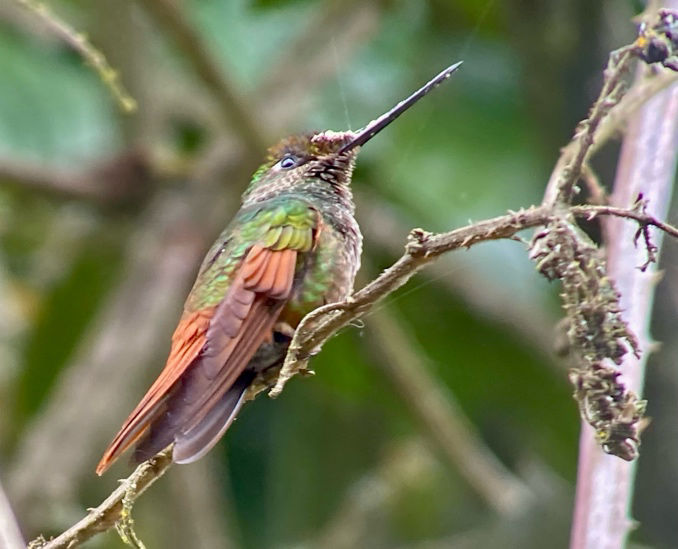
Rainbow Starfrontlet © Remi Grefa
Morning broke with a fine buffet breakfast served with a nice helping of Andean Gulls, a Superciliaried Hemispingus, and White-banded, White-throated, and Black-capped tyrannulets before initiating our road trip farther to the south, slamming on the brakes for a perched flock of Golden-plumed Parakeets en route, and through the quaint city of Loja to then head east and downslope to the Amazonian town of Zamora, reaching Copalinga Lodge in time to chalk up a few new hummingbirds before settling in. Our two full days at this site were well spent, with many special hummers and tanagers (Wire-crested Thorntail, White-tipped Sicklebill, Golden-eared and Paradise tanagers, etc.) and a slew of other local specialties, including Gray Tinamou, White-necked Parakeets, Andean Cock-of-the-rock, and Amazonian Umbrellabird, to name just a few. Pulling away from this hot-spot was not easy, but alas, it was time to move on.
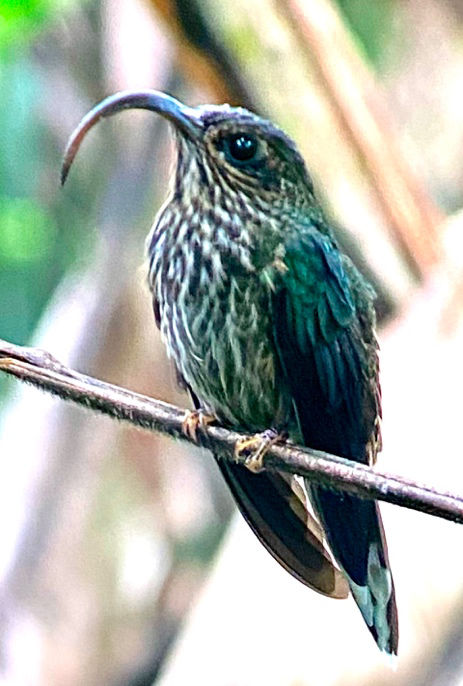
White-tipped Sicklebill © Remi Grefa
We detoured along a nearby side road to the tune of a Chestnut-tipped Toucanet, Ash-browed Spinetail, and Magpie Tanager among the many species we encountered. We continued up and through Loja (again) and climbed to the Cajanuma entrance to Podocarpus National Park for a box lunch break, complete with Hooded and Lacrimose mountain-tanagers. We then bee-lined it south, with a couple of brief stops to pick up Three-banded Warblers and Long-tailed Mockingbirds on our way to our destination—Tapichalaca Reserve, where we pulled into the Casa Simpson parking area for our two-night stay, only to be received by nine Bearded Guans!
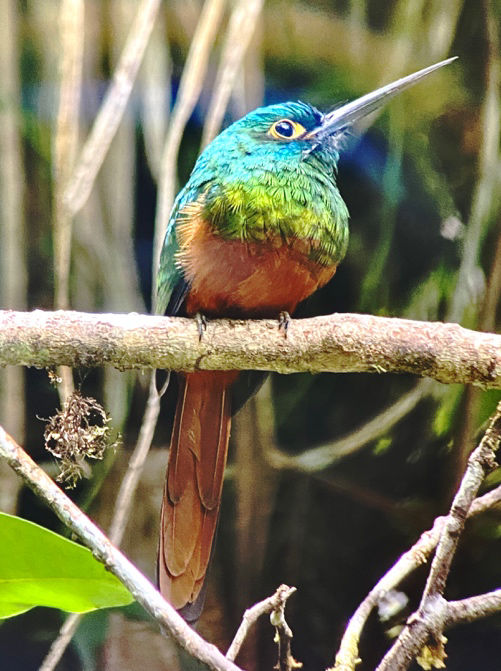
Coppery-chested Jacamar © Remi Grefa
The following morning had us slogging down a muddy slope, where our target of three Jocotoco Antpittas was awaiting, joined by a nervous Chestnut-naped Antpitta for good measure, after which a rain shower convinced us to go with a plan B. We drove downslope to the village of Valladolid, where we picked up a Torrent Duck, Black-lored Yellowthroat, and Black-faced and Silvery tanagers, etc. We then continued to the village of Palanda, where we added Rufous-fronted Thornbird, Marañón Thrush, Gray-chinned Hermit, Long-billed Starthroat, Rufous-browed Peppershrike, and Wing-barred Seedeater to name some of what we found. Back at Tapichalaca, in the afternoon, we came up with Orange-banded and Cinnamon flycatchers, Rufous Spinetail, Rufous Wren, and Golden-crowned Tanager among others to close out the day.
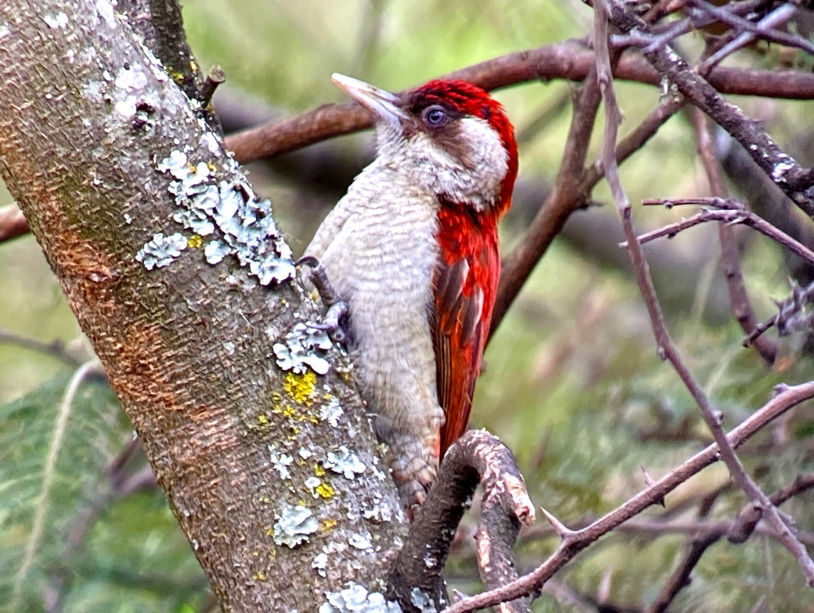
Scarlet-backed Woodpecker © Remi Grefa
The following morning, after breakfast and a small mixed-species foraging flock, we departed Tapichalaca’s temperate forest for a long drive to the western foothills; we made a key stop at an unlikely site—Cuenca’s Municipal Landfill—where Peruvian Pygmy-Owl, Scarlet-backed Woodpeckers, Collared Antshrikes, Pacific Horneros, White-tailed Jays, White-browed Gnatcatchers, and Plumbeous-backed Thrush were our prizes! Before our afternoon arrival at Buenaventura’s Umbrellabird Lodge we spotted soaring Barred and Gray-backed hawks from our van. The hummingbirds were buzzing, and we were joined at our checklist session and dinner by an obliging Black-and-white Owl.
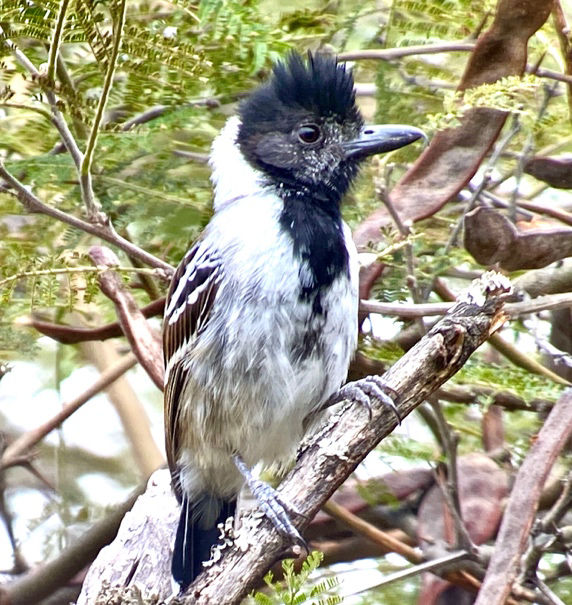
Collared Antshrike © Remi Grefa
Buenaventura Reserve had a lot to offer, walking the main track from the lodge, from the deck, and at the upper sector of the reserve. A few of the highlights included Rufous-headed Chachalacas, Violet-tailed Sylph, Crowned/Emerald-bellied Woodnymph, Chocó Toucan, the target El Oro Parakeets, Slaty-winged Foliage-gleaner, Club-winged Manakin, Long-wattled Umbrellabird, and Song Wren.

El Oro Parakeet © Remi Grefa
We exited Buenaventura with a Chestnut-headed Oropendola and drove downslope to the coastal wetlands at Puerto Jelí, stuffing our trip list there with ducks, Ecuadorian and Croaking ground-doves, numerous heron and shorebird species (residents and boreal migrants alike), Lesser Nighthawks, Wood Storks, Roseate Spoonbills, Ringed and Green kingfishers, Gray-cheeked Parakeets, and Pacific Parrotlets . . . and the list goes on. Our final drive to Guayaquil for our return flight to Quito was interrupted by a lunch/couple of quick birding breaks, adding scope views of a distant Horned Screamer, many Snail Kites, a Savanna Hawk, and Streak-headed Woodcreeper.
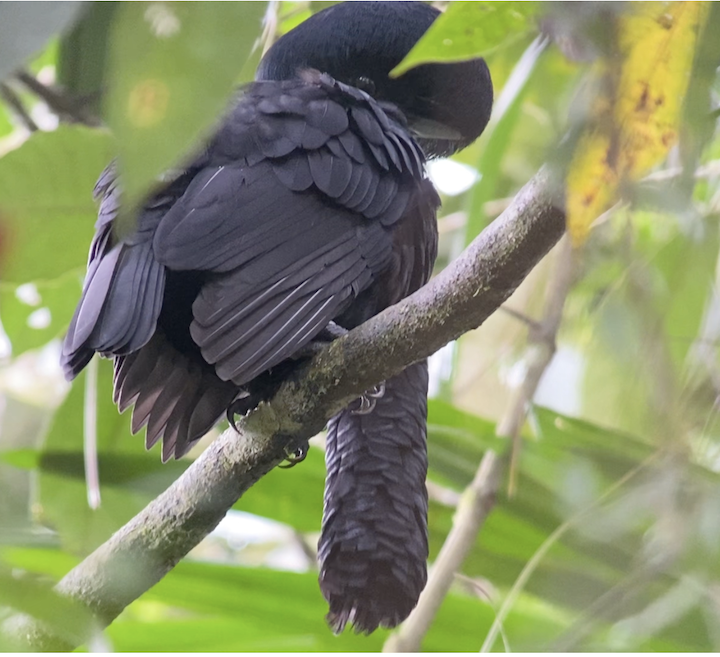
Long-wattled Umbrellabird © Remi Grefa
And so, our Extravaganza came to pass with its diversity of ecosystems, habitats, and birds. Each of us surely claim our personal favorites . . . but overall, there were a lot to choose from, so here’s just a sample: Rufous-headed Chachalaca and Bearded Guan; Torrent Duck; White-tipped Sicklebill; Wire-crested Thornbills; Violet-throated Metaltail!; Rainbow Starfrontlet; Gray-backed Hawk; Chestnut-tipped Toucanet; Crimson-bellied Woodpecker; El Oro Parakeets!; Golden-plumed Parakeets; Collared Antshrike; Jocotoco Antpittas; Club-winged Manakin; Andean Cock-of-the-rock; Amazonian and Long-wattled umbrellabirds; White-tailed Jays; and just too many spectacular tanagers . . . all seen so well!
Juan, Remi, and I were so pleased to be able to share so many excellent experiences with our wonderful fellow travelers! We hope to see you again in the not-so-distant future.
A complete list of the birds recorded on our tour can be found at: https://ebird.org/tripreport/399042
Read the description for the next departure of this tour.
Paul Greenfield's upcoming tour schedule.
Remi Grefa's upcoming tour schedule.
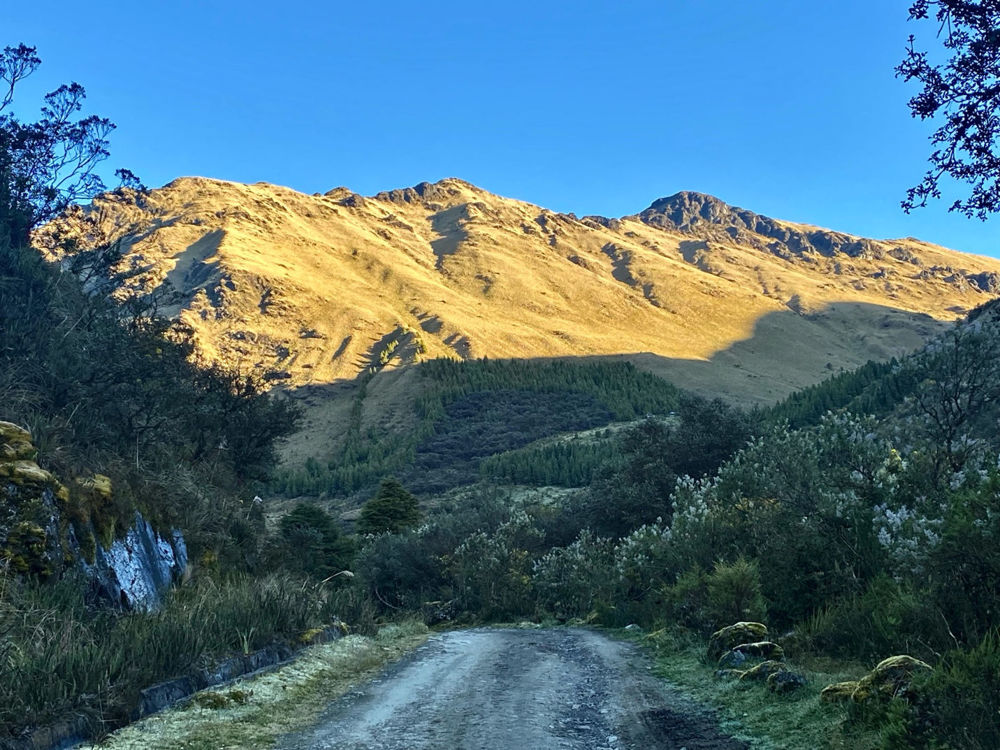
View of páramo zone, El Cajas National Park © Paul J. Greenfield
ITINERARY
Day 1, Aug. 17, 2025—Arrival in Quito, Ecuador
Day 2, Aug. 18, 2025—San José de Puembo; transfer to Mariscal Sucre International Airport for flight to Cuenca; Drive to Llaviucu Lake (which was closed to the public), birding along the entrance road; Drive upslope to paramo zone, incidental stop enroute, then onward to Illincocha and Rancho Hermanos Prado (overnight at Hostería Dos Chorreras)
Day 3, Aug. 19, 2025—Early morning at Dos Chorreras; Departure and drive through Cuenca and south to Saraguro (lunch break), and through Loja, then heading east and downslope to the Amazonian foothill town of Zamora, Copalinga lodge (overnight at Copalinga Lodge)
Day 4, Aug. 20, 2025—Morning around Copalinga grounds and road to the Bombuscaro (Podocarpus National Park) trail entrance; Afternoon at Copalinga (overnight at Copalinga Lodge)
Day 5, Aug. 21, 2025— Morning around Copalinga grounds; Afternoon to Parque Lineal and then to the outskirts of Zamora (overnight at Copalinga Lodge)
Day 6, Aug. 22, 2025—Early morning at Copalinga; Departure, drive to La Fragancia Road; then upslope through Loja to Cajanuma (Podocarpus National Park) entrance road and park station (for box lunch); Drive (with incidental birding stops) through Vilcabamba to the Tapichalaca Reserve (overnight at Casa Simpson)
Day 7, Aug. 23, 2025—Tapichalaca Reserve/Casa Simpson; Morning slog down muddy trail to new Jocotoco Antpitta site; Drive to Valladolid and Palanda (return for lunch); Afternoon along traditional Jocotoco Antpitta Trail (overnight at Casa Simpson)
Day 8, Aug. 24, 2025—Early morning departure from Tapichalaca; Drive south through Loja with birding stop in upper Catamayo Valley along the Municipal Landfill road; continuing onward, downslope with lunch stop at Balsapamba and then through Balsas to the Buenaventura Reserve, Umbrellabird Lodge (overnight at Umbrellabird Lodge)
Day 9, Aug. 25, 2025—Buenaventura Reserve all day—dining room deck, main track, and Umbrellabird Trail (overnight at Umbrellabird Lodge)
Day 10, Aug. 26, 2025—Buenaventura Reserve: morning at dining room deck and along main track; Afternoon drive along exit road and to the La Esperanza area (overnight at Umbrellabird Lodge)
Day 11, Aug. 27, 2025—Early morning at Umbrellabird Lodge; Drive downslope to Puerto Jelí (wetlands and mangroves); Drive to Guayaquil with lunch break at Manglares-Churute National Park station area and nearby wetlands—to Joaquin de Olmedo International Airport for return flight to Quito, San José de Puembo for final checklist and farewell dinner
(day-room/overnight at San José de Puembo)
Day 12, Aug. 28, 2025—Southern Ecuador Hummingbird & Tanager Extravaganza ends

